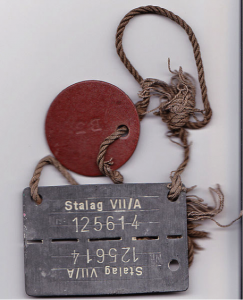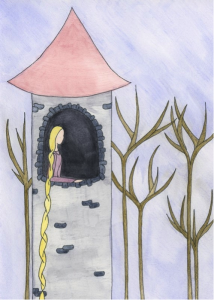From New Economic Perspectives:
Was “Cigarette-Money” in World War II POW Camps a Case of Commodity Money Origination?
By Matthew Berg
1. A Parable About the Origin of MoneyHT: naked capitalism
Perhaps the most convincing single example cited by proponents of the view that money is a commodity is the well-known use of cigarettes as “money” by Allied prisoners of war in Germany during World War II. Just six months after being liberated by the U.S. Army, former POW R.A. Radford published his famous article in the journal Economica, “The Economic Organization of a P.O.W. Camp,” describing how he and his compatriots had used cigarettes as a medium of exchange during their unpleasant stay at their not-so-idyllic Bavarian Stalag.
But as we will see below, there are some significant problems with the notion that cigarettes were really a form of commodity money which developed spontaneously in the way commodity money theorists suggest. In fairness to Radford himself, he recognized that “prison camp is not to be compared with the seething crowd of higglers in a street market, any more than it is to be compared with the economic inertia of a family dinner table.” But, as is often the case in economics, subsequent interpreters tend to underemphasize such subtle points as this. For example, in the view of prominent Austrian economist Robert P. Murphy, “there is nothing in Radford’s account that conflicts with the standard economists’ story about the origin of money.”
An identification tag worn by a POW from Radford’s very own Kriegsgefangenen-Mannschafts-Stammlager VII-A:
Radford’s article became an instant classic, and has since become a staple of introductory economics textbooks, with excerpts serving as a real-world illustration of the standard textbook fairy tale about how money arose. The trouble is that the fairy tale is not terribly convincing on its own terms, as we shall see in the next paragraph. Though Radford’s POW camp is not the center point of the commodity money argument (gold is), it makes for a pithy and compelling archetype which makes the commodity money narrative much more convincing for students.
The traditional fairy tale goes something vaguely like this: once upon a time, in a faraway land, there lived a princess, some peasants, and perhaps also a frog. The princess wanted various commodities, such as a quality comb and some food to eat, and the peasants wanted locks of the princess’ hair (as well as various commodities produced by other peasants). The princess’ hair had many desirable properties. First, it was uniform; second, it was transportable; third, it was divisible; fourth, and perhaps most importantly, it was shiny. The princess, of course, as the issuer of the locks of hair, became very wealthy. And that is how we got castles and expensive towers. But eventually the princess could not re-grow locks of hair quickly enough to cut them and package them into a sufficient number of locks to meet demand from the peasants and the frog, and so everyone began using gold instead. And then everyone lived happily ever after – especially the princess, who was as we have mentioned very wealthy.
The princess and the hair
2. The Functions of Cigarette-Money
Although cigarettes are not really durable, they had some other characteristics necessary for a usable exchange currency, such as relative uniformity, desirability, and light weight. Most captured American soldiers were addicted to nicotine (thanks to the free cigarettes provided to soldiers courtesy of America’s tobacco companies, who surely had only the troops’ best interests at heart as they provided them with the opportunity to develop a life-long substance abuse habit)....MUCH MORE

